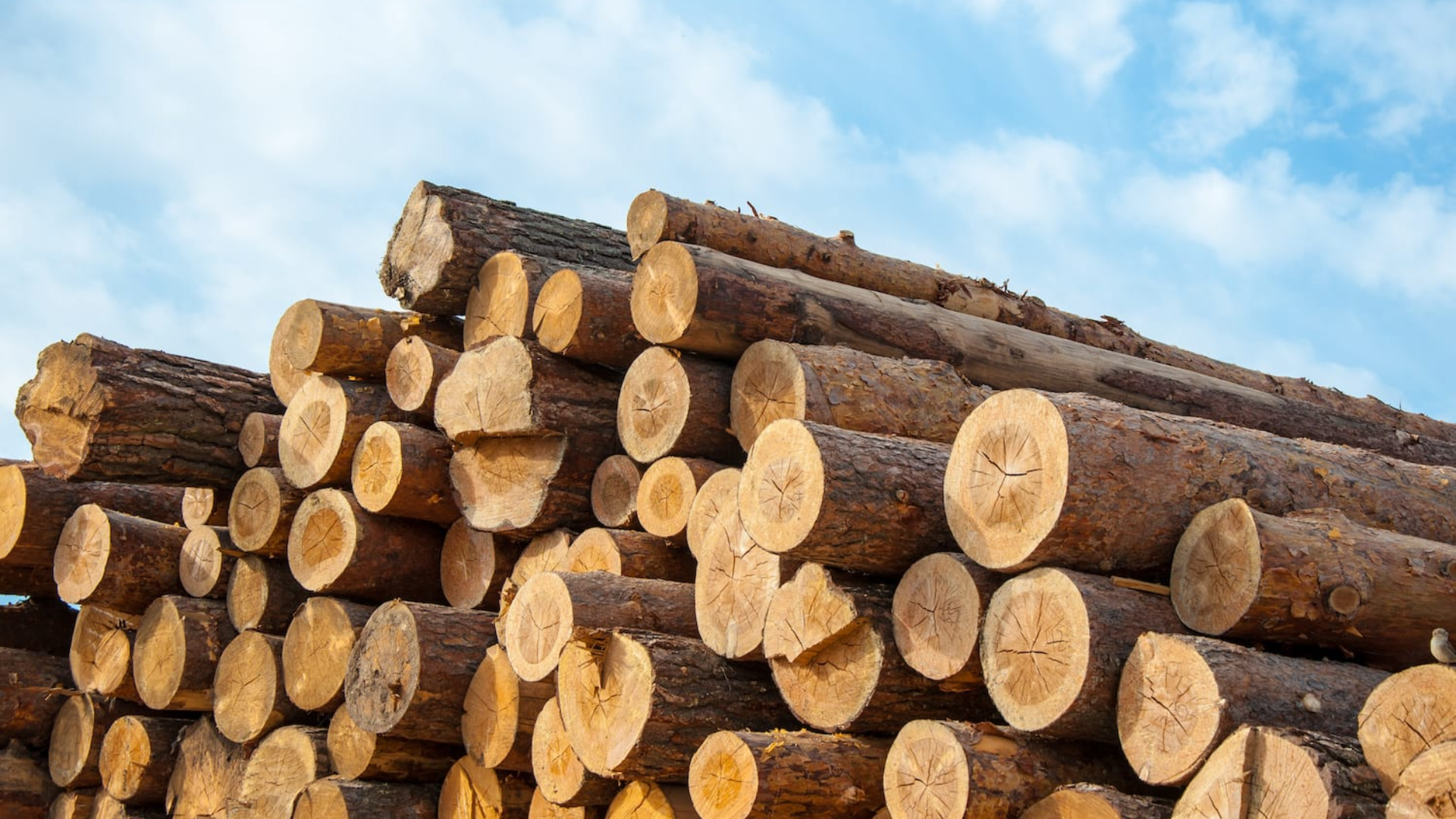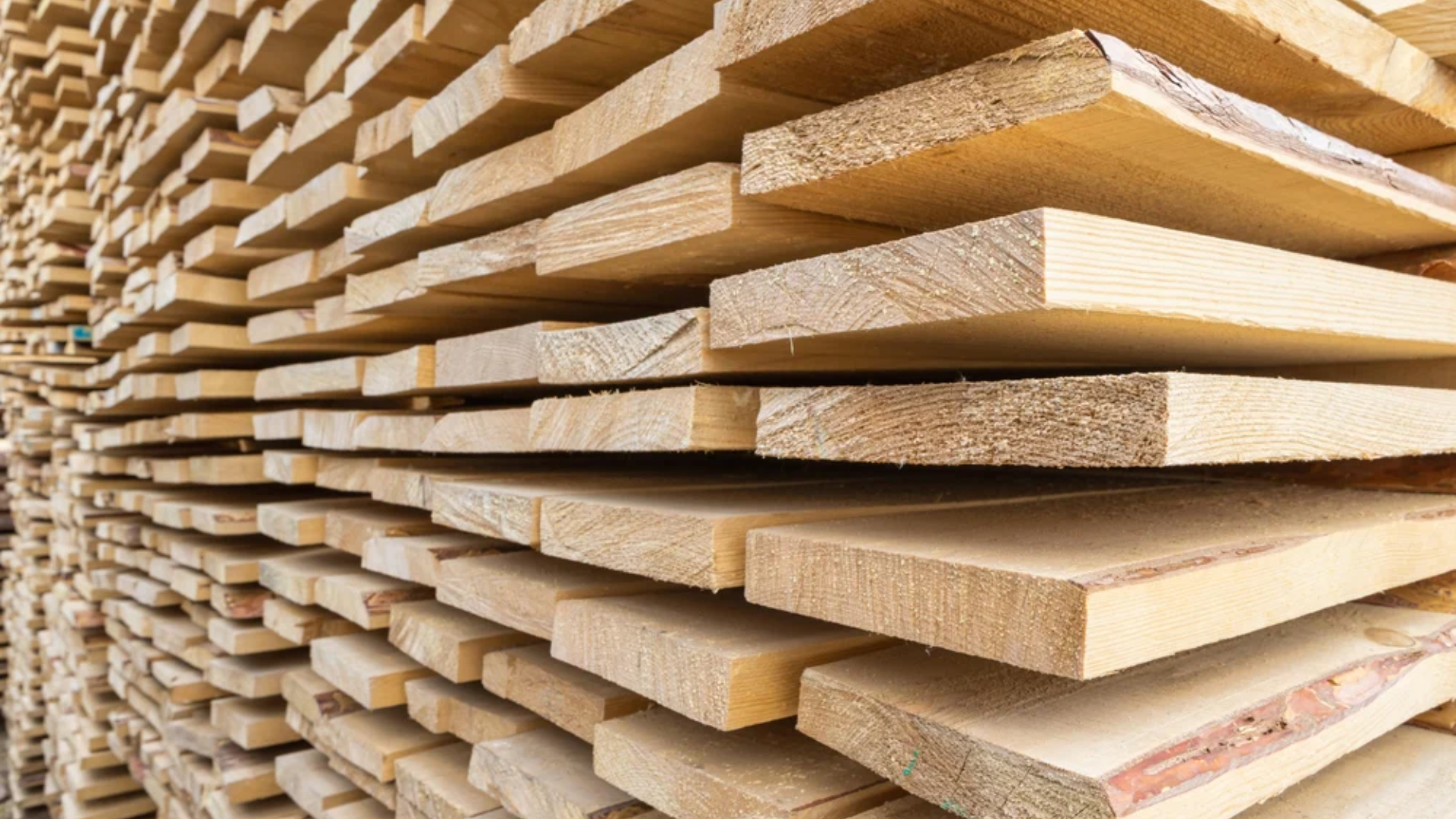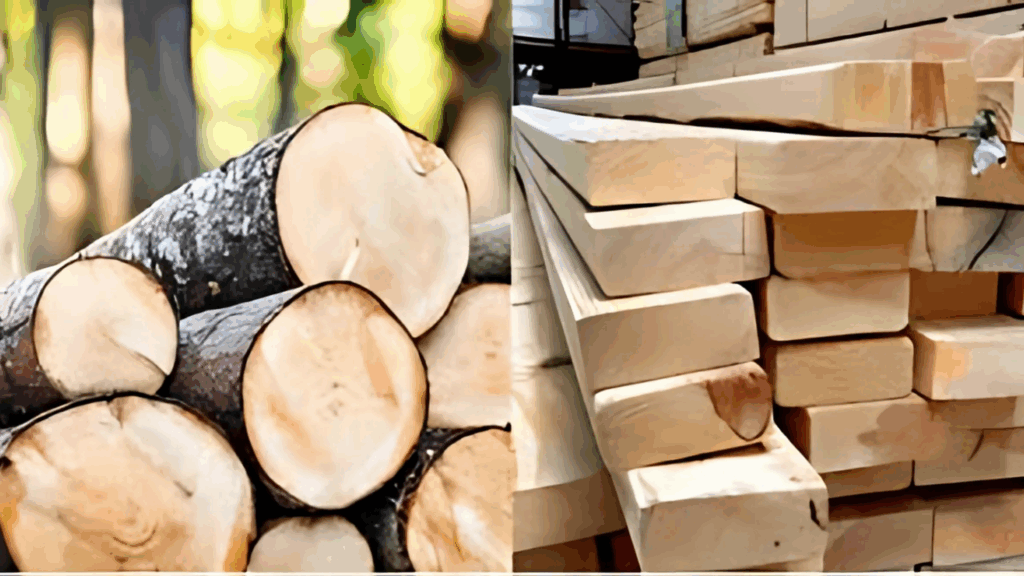In the world of woodworking and construction, the terms “timber”and “lumber”are often used interchangeably. But do they actually mean the same thing?
If you’ve ever found yourself confused about these terms, you’re not alone. In this article, I’ll break down the differences between timber and lumber.
Let’s take a look at what each term really means, how they’re used in different regions, and why it matters for your DIY or construction projects.
No matter if you’re a DIY enthusiast, a budding carpenter, or a homeowner tackling a project, understanding these terms will help you choose the right materials for your needs.
Trust that by the end, you’ll feel more confident about using the correct terms and knowing what you’re working with.
What Is Timber?

Timberrefers to wood that is still in its natural, unprocessed state. It usually means felled trees or logs.
In the U.S., timberoften refers to standing trees or logs. In places like the UK or other Commonwealth countries, timbercan also mean processed wood, ready for use in projects.
Here’s where you might come across timber:
- Large-scale construction: Timber is used for building foundations or heavy frames.
- Framing: It’s a common choice for structural elements in houses and buildings.
- Structural elements: Beams, posts, and supports often come from timber.
Timber plays a big role in the beginning stagesof a project, before it gets processed into the lumber you may work with later. Understanding this difference is key!
What Is Lumber?

Lumberis wood processed into beams, planks, or boards. It istypically cut to standardized sizes.
In the U.S.and Canada, we use the term lumberfor processed wood. It’s ready to be used in a variety of projects.
Lumber is found in many places:
- Residential construction: It’s the go-to material for building walls, floors, and roofs.
- Furniture making: Whether it’s tables or chairs, lumber is a key part.
- Cabinetry: Lumber is used to create cabinets and other interior woodwork.
Lumber is more finishedand ready to use than timber. It’s what you’ll usually find when starting smaller DIY projects or building your home.
Timber vs Lumber: Key Differences

There are some important differences between timber and lumber. Let’s break themdown.
Processing Stage
- Timber: This is unprocessed wood, usually in the form of logs or standing trees.
- Lumber: This is processed wood, cut into specific sizes and shapes, ready for use.
Regional Terminology
- In the U.S.and Canada, timber refers to unprocessedwood, while lumber is processedwood.
- In the UKand Commonwealthcountries, timber can mean processedwood. They rarely use the word “lumber.”
Usage Context
- Timberis often used in structural framingor large-scale construction projects.
- Lumberis more common for interior finishes, furniture, and cabinetry.
Here’s a quick summary:
| Feature | Timber | Lumber |
|---|---|---|
| Processing Stage | Unprocessed logs or trees | Processed, cut into sizes |
| Regional Terminology | U.S./Canada: Unprocessed | U.S./Canada: Processed |
| Regional Terminology | UK/Commonwealth: Processed | UK/Commonwealth: Rarely used |
| Common Use | Structural framing, construction | Furniture, cabinetry, finishes |
Practical Implications for DIY Projects

When it comes to DIY projects, choosing the right material makes a big difference. Let’s examine this further.
Choosing the Right Material
For structural integrity:Opt for timber (unprocessed) if you’re working on framing or large construction. It’s strong and ideal for structural support. It gives your project a solid foundation.
For aesthetic finishes: Select lumber (processed) when you need something ready for furniture or interior finishes. It’s easier to work with and looks good. Plus, it saves you time.
Availability and Cost
Processed lumberis often more readily availablein stores. It’s easier to find and usually cheaper. You’ll also save time, as it’s pre-cut and ready for use.
If you’re starting with DIY, lumber is the way to go. It’s less work and perfect for beginners, and it’sa great way to get comfortable with woodworking.
Tools and Techniques
Timberrequires more specialized tools to process and shape. It may need saws and equipment that beginners might not have. If you choose timber, you may need to invest in more gear.
Lumberis pre-cut, so it’s much easier to work with using basic tools. It’s perfect for simple projects like shelves or tables.
So, next time you head to the hardware store, remember: timberfor strong structure, lumberfor easy and beautiful finishes!
Tips for Beginners
If you’re just starting, here are some helpful tips to make your projects easier.
Start with Lumber
For ease of use, begin with lumber. It’s processed, ready to go, and perfect for most DIY projects. It’s also easier to findat hardware stores and won’t require specialized tools to work with.
Lumbercomes in different grades, so choose one that matches your project needs. For example, if you’re making furniture, pick a higher-grade lumber for a smoother finish.
Understand Local Terminology
Be aware of the regional differencesin terms like timber and lumber. What’s called timber in one place may be called lumber in another.
This knowledge will help you avoid confusion and ensure you’re buying the right materials. For instance, timber might mean unprocessed logs in the U.S.but processed wood in the UK.
If you’re working with people from different regions, it’s important to clarify what you mean. A simple conversation can prevent manymistakes.
Seek Expert Advice
Don’t hesitate to ask for help. Local suppliers or woodworking communities can provide advice specific to your area.
Getting tips from experienced people can save you time and help you choose the right materials for your project. They might even suggest local suppliers who can offer better deals or specific advice for your region.
Join online forums or local workshops. There are tons of resources available to help beginners.
Pros and Cons of Using Timber vs Lumber
When deciding between timberand lumberfor your project, it’s important to know the pros and cons of each. Let’s break it down.
Timber
Pros
- Stronger for large structures: Timber is great for heavy-duty construction, like framing or beams.
- Natural: It’s often untreated, so it can be a more sustainable option.
- Customizable: You can cut and shape it to your exact needs.
Cons
- More difficult to work with: It requires specialized tools and skills.
- Not as refined: Timber can have imperfections that make it harder to use for detailed projects.
- Takes longer: Since it’s unprocessed, it may require extra steps like drying and cutting before use.
Lumber
Pros
- Ready to use: Lumber is pre-cut, so it’s faster to use in your projects.
- Easier to handle: It’s generally lighter and requires fewer tools to work with.
- Consistent quality: Lumber is more refined and comes in uniform sizes, making it ideal for precise work.
Cons
- Less strong for heavy-duty use: Lumber may not be suitable for structural framing or large-scale construction.
- Higher cost: Processed lumber can be more expensive than timber.
- Limited customization: It comes in standardized sizes, so you might have to settle for what’s available.
Here’s a quick comparison:
| Feature | Timber | Lumber |
|---|---|---|
| Strength | Stronger for large projects | Not as strong for heavy-duty use |
| Ease of Use | Requires more tools and skills | Ready to use, easier to handle |
| Customization | Can be cut to any size or shape | Limited to standardized sizes |
| Cost | Usually cheaper | Can be more expensive |
| Quality | Can have imperfections | More consistent and refined |
| Processing Time | Takes longer to prepare | Ready to go, no extra preparation |
Common Mistakes to Avoid When Using Timber and Lumber
When working with timberand lumber, it’s easy to make mistakes, especially if you’re just starting. Here are some common mistakes I’ve seen beginners make—and how you can avoid them.
- Not Measuring Properly: One of the biggest mistakes is skipping measurements or not double-checking them. When you’re in a rush, it’s easy to make this error.
- Choosing the Wrong Material: Another mistake is using timberwhen you need lumber, or vice versa. Timberis best for framing or large-scale construction, while lumberis ideal for detailed, smaller projects like furniture or cabinetry.
- Know your project: Make sure you choose the material that’s best suited for the task at hand.
- Ignoring Wood Moisture Levels: Many beginners forget to check the wood’s moisture content. If the wood is too wet or too dry, it could warp or crack over time. Always check the moisturelevel before starting your project.
- Using Damaged Wood: Some people might grab wood with visible cracks or knots without realizing it could affect the project. While minor imperfections are okay, large cracks or bad knots can make the wood weak or harder to work with.
By avoiding these common mistakes, you’ll have a smoother experience working with timberand lumber. It’ll save you time, money, and frustration, and lead to better results for your projects.
Conclusion
While ‘timber’and ‘lumber’may seem synonymous, understanding their differences is key to selecting the right material for your project.
The terms can vary depending on where you are, so it’s important to know what each one means in your region. Choosing the right material can make a big difference in the quality, cost, and ease of your project.
I learned early on that knowing when to use timber or lumber can help you avoid costly mistakes and improve your woodworking skills.
Even ifyou’re framing a house or building a piece of furniture, the right material will help you get the job done right.
For more tips and beginner-friendly guides, explore our resources. We’re here to help you succeed in your woodworking journey.

